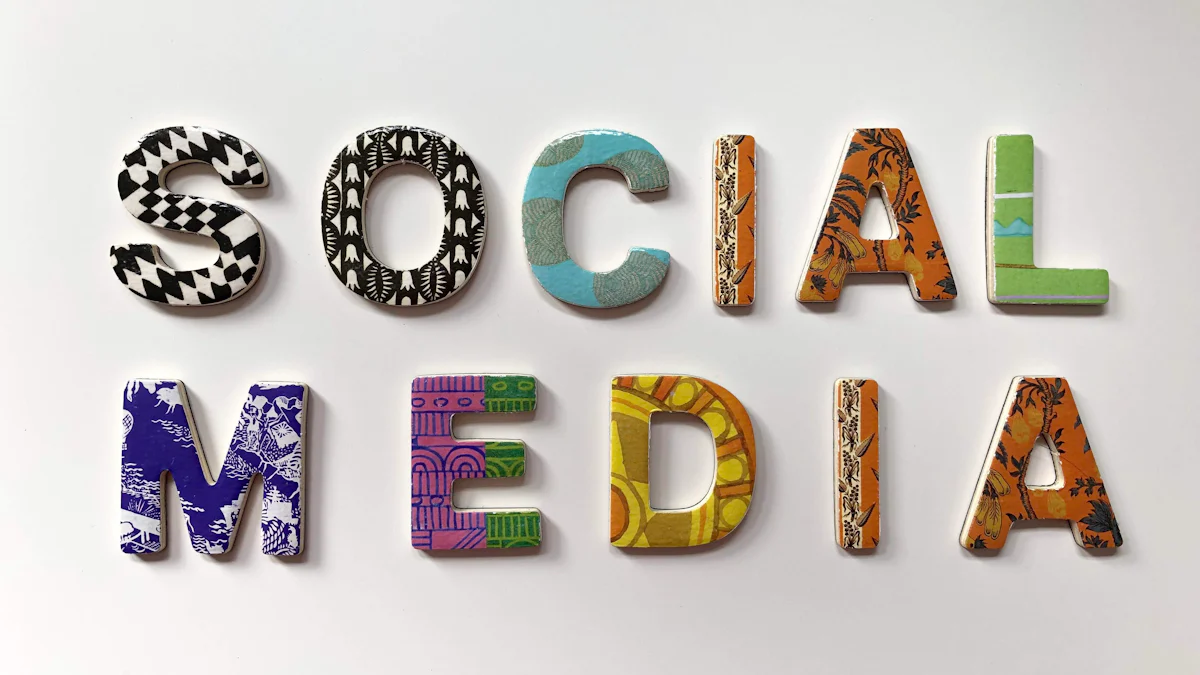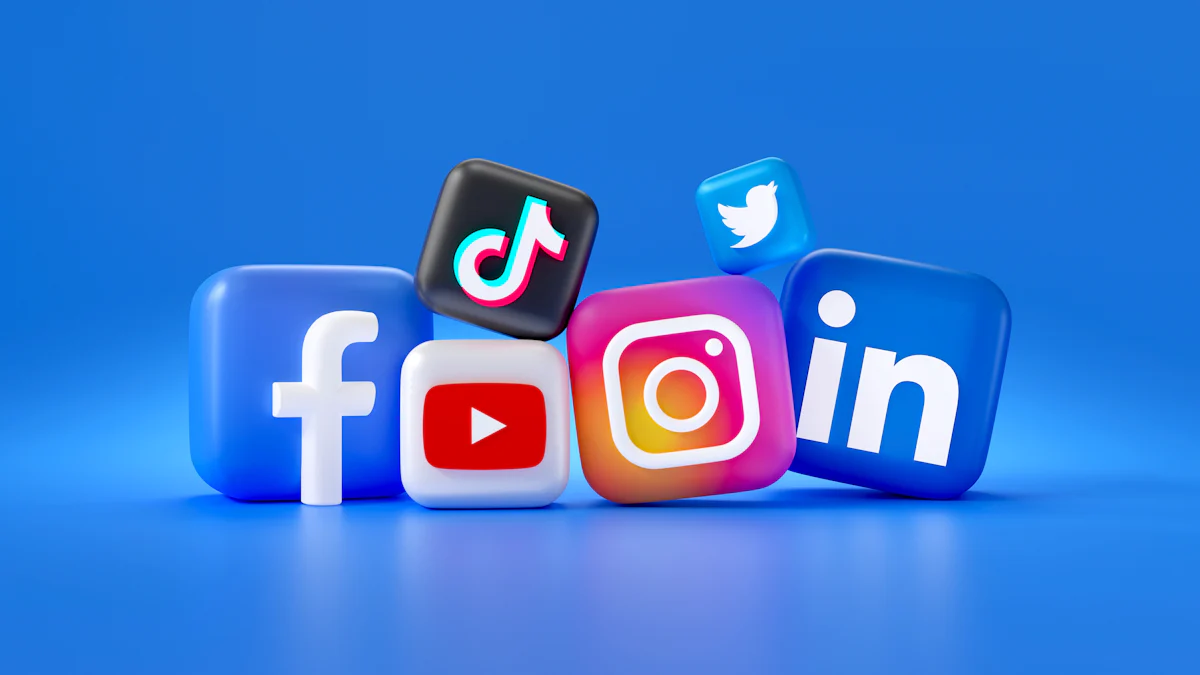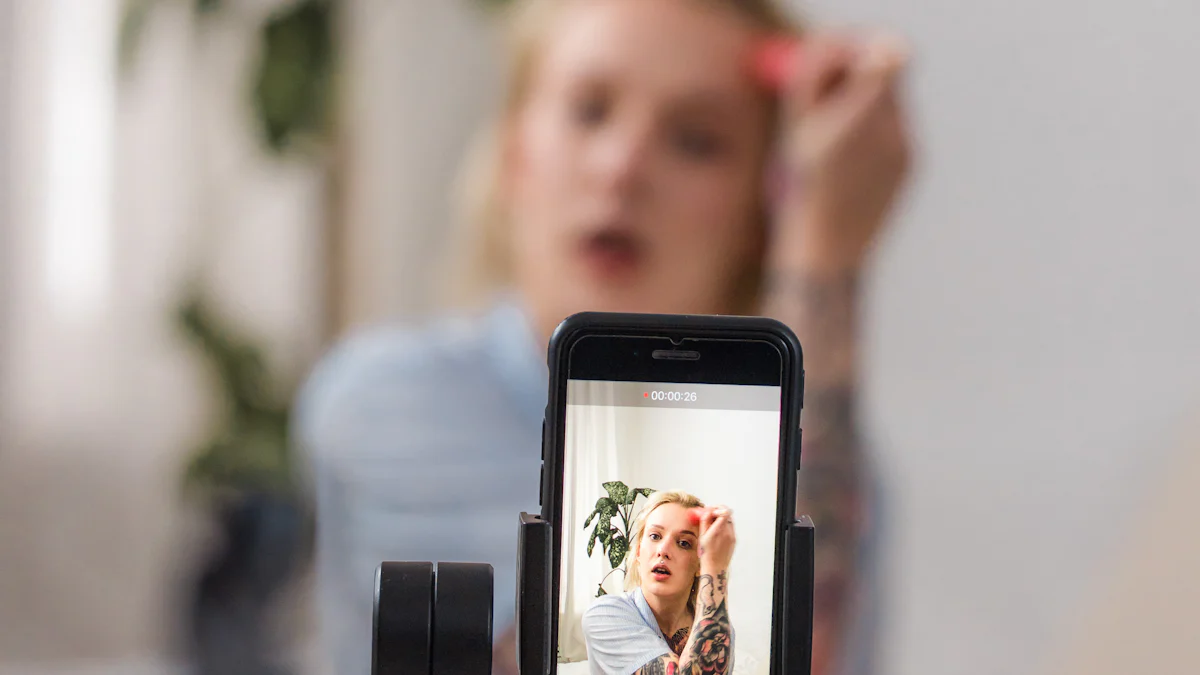Influencer Marketing Coordinator Job Trends to Watch in 2025

The role of an influencer marketing coordinator is changing faster than ever. You’re not just managing campaigns anymore—you’re navigating a world shaped by new technologies, shifting audience behaviors, and the growing need for authentic connections. In 2025, influencer marketing will demand more creativity, adaptability, and data-driven strategies than ever before. Staying ahead of influencer marketing trends isn’t just a nice-to-have; it’s essential if you want to thrive in this competitive space. Whether it’s creating engaging content or leveraging the latest tools, you’ll need to stay sharp to succeed.
Emerging Platforms and Technologies

AI's Role in Influencer Marketing
AI-driven tools for campaign personalization
AI is revolutionizing how you approach influencer marketing. With AI-driven tools, you can create highly personalized campaigns that resonate with your audience. These tools analyze engagement rates, audience demographics, and even sentiment to help you craft content that feels authentic. For example, platforms like Alison.ai can process billions of data points to recommend creative elements that align with your audience's preferences. This means your campaigns won’t just reach people—they’ll connect with them on a deeper level.
Predictive analytics for influencer selection
Choosing the right influencer can make or break your campaign. Predictive analytics simplifies this process by forecasting partnership outcomes. AI tools assess metrics like engagement rates and audience alignment, ensuring you pick influencers who deliver results. This data-driven approach not only saves time but also boosts your return on investment. By 2025, relying on predictive analytics will be a must for staying competitive in influencer marketing.
Platform-Specific Influencer Marketing Trends
LinkedIn's impact on B2B influencer marketing
LinkedIn is becoming a powerhouse for B2B influencer marketing. With engagement rates soaring and content creation up by 41%, it’s clear that professionals are paying attention. You can leverage LinkedIn to connect with trusted industry influencers, as 87% of B2B buyers prefer their content over traditional sales pitches. This platform is perfect for building credibility and fostering meaningful business relationships.
TikTok's continued dominance in short-form content
TikTok isn’t slowing down. Its short-form videos are still captivating younger audiences and driving social commerce. Brands are using TikTok influencers to create interactive challenges and unique content that stands out. If you’re not already incorporating TikTok into your strategy, you’re missing out on a platform that excels at engagement and creativity.
Tools Shaping 2025 Influencer Marketing
Automation tools for influencer outreach
Automation tools are game-changers for influencer outreach. Platforms like Affable and Upfluence streamline the process by offering features like influencer discovery, campaign tracking, and social listening. These tools help you manage relationships and track performance, making your job easier and more efficient.
Advanced analytics for ROI measurement
Gone are the days of relying on follower counts. Advanced analytics tools now let you measure ROI with precision. Metrics like engagement rates and audience demographics are key to evaluating an influencer’s effectiveness. By 2025, these tools will be essential for optimizing your campaigns and ensuring they deliver maximum impact.
Key Skills for Influencer Marketing Coordinators in 2025
Data-Driven Decision Making
Leveraging analytics to optimize campaigns
Data is your best friend when it comes to running successful campaigns. Advanced analytics tools let you track audience sentiment, conversion rates, and engagement metrics in real time. This means you can refine your campaign strategy mid-way instead of waiting until it’s over. For example, if a particular influencer isn’t resonating with your audience, you can pivot quickly to someone who aligns better. Tools like Google Analytics and Sprout Social make it easier to monitor performance and adjust your approach for maximum impact.
Identifying trends through data interpretation
Spotting trends before they go mainstream gives you a competitive edge. By analyzing social media conversations, hashtags, and sentiment, you can identify what’s gaining traction. Platforms like BuzzSumo and Social Mention help you stay ahead by uncovering emerging topics and audience preferences. You can also learn from past campaigns by studying performance data to see what worked and what didn’t. This proactive approach ensures your influencer strategies remain fresh and relevant.
Creativity and Content Strategy
Developing authentic and engaging campaigns
In a crowded market, authenticity is what makes your campaigns stand out. Let influencers take the lead in shaping the content. Their unique voices create a narrative that feels genuine and relatable. Amy Higgins, Director of Content Strategy at Cloudflare, highlights how this approach fosters emotional connections and drives organic engagement. A great example? The Socialverse 2023 campaign, which generated 23 million impressions and won Best Use of Influencer Marketing at the 2024 Content Marketing Awards. When you focus on authenticity, your campaigns don’t just reach people—they resonate with them.
Collaborating with influencers on storytelling
Strong collaborations with influencers are key to crafting compelling stories. Work closely with them to align their personal brand with your campaign goals. This partnership ensures the content feels seamless and engaging. Influencers know their audience best, so trust their input on what will work. By blending your vision with their creativity, you’ll create campaigns that feel less like ads and more like meaningful conversations.
Adaptability and Lifelong Learning
Keeping up with platform updates
Social media platforms evolve constantly, and staying updated is crucial. Whether it’s a new TikTok feature or an algorithm change on Instagram, you need to adapt quickly. Follow industry leaders, attend webinars, and participate in workshops to stay informed. Regularly experimenting with new platforms and content formats also helps you discover innovative ways to engage your audience.
Embracing emerging technologies
Technology is reshaping influencer marketing, and you can’t afford to ignore it. AI tools, automation software, and advanced analytics are becoming essential. Embrace these technologies to streamline your workflows and improve campaign performance. Collaboration also plays a big role here. By working with your team and influencers, you can pool resources and adapt to changes more effectively. Active listening to feedback ensures you’re always improving and staying ahead of the curve.
Budget and Resource Allocation Trends in Influencer Marketing
Increased Spending on Influencer Marketing
Shifting budgets from traditional to digital marketing
By 2025, brands are expected to allocate a significant portion of their marketing budgets to influencer marketing. On average, around 25% of total budgets will go toward this strategy, with 23% of companies planning to spend over 40%. This shift reflects the growing importance of digital platforms over traditional advertising. You’ll see brands moving away from TV spots and print ads, focusing instead on influencer-driven campaigns that deliver measurable results. Digital marketing offers flexibility and precision, making it the go-to choice for businesses aiming to connect with modern audiences.
Prioritizing long-term influencer partnerships
Long-term influencer partnerships are becoming a cornerstone of successful strategies. These collaborations build trust and authenticity, which resonate deeply with audiences. When influencers consistently promote your brand, their followers view it as a genuine endorsement rather than a one-off promotion. This approach also saves time and resources by reducing the need for constant influencer searches. Plus, it ensures consistent messaging across campaigns, boosting brand recognition and engagement. Over time, these partnerships provide valuable insights into audience behavior, helping you refine your influencer strategies.
ROI-Focused Budgeting
Allocating resources based on performance metrics
As budgets grow, so does the need for precise ROI measurement. According to a Linqia survey, 53% of marketers find ROI tracking their biggest challenge. To overcome this, you can use tools like Google Analytics and UTM parameters to monitor conversions. A/B testing helps identify which influencer content works best, while promo codes directly link sales to specific campaigns. By focusing on performance metrics, you can allocate resources to influencers and strategies that deliver the highest returns.
Balancing investments in micro- and macro-influencers
Finding the right balance between micro- and macro-influencers is key to maximizing ROI. Micro-influencers excel at engaging niche audiences with authentic content, while macro-influencers offer broader reach and visibility. A mixed approach lets you leverage both strengths. For example, you might use micro-influencers for targeted campaigns and macro-influencers for brand awareness. This strategy ensures you get the best of both worlds without overspending.
| Influencer Type | Advantages | Ideal Use Case |
|---|---|---|
| Micro-Influencers | Higher engagement, authenticity, cost-effective | Targeted campaigns for niche audiences |
| Macro-Influencers | Broader reach, visibility | Brand awareness on a larger scale |
Diversification of Marketing Spend
Exploring niche platforms for targeted campaigns
Niche platforms are gaining traction as brands look to connect with specific audiences. Platforms like Twitch, Discord, and BeReal offer unique opportunities to engage users in less saturated spaces. These platforms allow you to create highly targeted campaigns that feel personal and relevant. By diversifying your marketing spend, you can tap into new communities and expand your reach without competing for attention on overcrowded platforms.
Investing in emerging technologies
Emerging technologies like AI and AR are reshaping influencer marketing. AI tools streamline influencer discovery and campaign management, while AR enhances content interactivity. For instance, AR filters created by influencers can drive engagement and make your campaigns more memorable. Investing in these technologies not only keeps you ahead of industry trends but also ensures your strategies remain innovative and effective.
Shifting Audience and Content Preferences

The Rise of Authenticity in Influencer Marketing
Building genuine connections with audiences
Authenticity is no longer optional in influencer marketing—it’s the foundation of trust. Only 28% of Gen Z consumers trust the brands they buy from, but 69% trust recommendations from influencers, friends, and family. This shift shows how much people value genuine connections over flashy ads. When influencers share real-life experiences with a product, like a makeup tutorial or a “Get Ready With Me” video, their audience starts to trust both the influencer and the brand. You can’t fake this kind of connection. If your campaigns feel inauthentic, you risk losing followers and damaging your brand’s reputation.
Moving away from overly polished content
Audiences crave content that feels real. Overly polished posts can come across as staged and unrelatable. Instead, focus on creating authentic content that reflects everyday life. Let influencers showcase your products in their natural environment. This approach not only builds trust but also drives higher engagement. People want to see themselves in the content they consume, and authenticity makes that possible.
Diversity and Inclusion in Campaigns
Partnering with diverse influencers
Diversity in influencer marketing isn’t just a trend—it’s a necessity. Collaborating with influencers from various backgrounds ensures your campaigns resonate with a broader audience. When people see influencers who reflect their identities, they feel seen and valued. This fosters trust and loyalty, making your brand more relatable. Diverse partnerships also challenge societal norms and promote inclusivity, which strengthens your brand’s image.
Creating inclusive and representative content
Inclusive content goes beyond representation—it’s about authenticity. Work with influencers who genuinely align with your values. For example, campaigns by Munroe Bergdorf celebrate diversity, while Sophie Morgan promotes accessibility in advertising. These efforts show your audience that you’re committed to inclusivity, not just during special occasions but year-round. Align your internal values with your external messaging to maintain credibility and build lasting connections.
Leveraging Micro-Influencers
Engaging niche audiences with smaller influencers
The rise of micro-influencers is reshaping how you connect with audiences. These influencers have smaller but highly engaged followings, making their recommendations feel like advice from a trusted friend. Their niche expertise allows them to create content that resonates deeply with specific groups. Whether it’s a local food blogger or a fitness enthusiast, micro-influencers help you target niche markets effectively.
Building trust through personalized connections
Micro-influencers excel at building trust. Their followers see them as relatable and approachable, which leads to authentic engagement. Plus, working with micro-influencers is budget-friendly, letting you maximize your marketing spend. By collaborating with these influencers, you can create campaigns that feel personal and impactful, boosting your brand’s credibility and audience loyalty.
Future-Proofing Your Career as an Influencer Marketing Coordinator
Building a Personal Brand
Showcasing expertise on professional platforms
Your personal brand is your calling card in the influencer marketing world. To stand out, focus on defining your niche and creating content that reflects your expertise. Platforms like LinkedIn are perfect for showcasing your skills and sharing insights about 2025 influencer marketing trends. Post regularly, engage with your audience, and share case studies or campaign results to demonstrate your impact. Authenticity is key here—people connect with genuine voices.
"Improving your skills and staying authentic are essential for building a strong personal brand in this competitive field."
Networking with industry leaders and peers
Networking isn’t just about collecting contacts—it’s about building meaningful relationships. Attend industry events, join online communities, and participate in discussions with other professionals. Collaborating with influencers or brands can also boost your visibility. These connections can open doors to new opportunities and keep you informed about the latest strategies in influencer marketing.
Upskilling for 2025 Influencer Marketing
Enrolling in advanced marketing courses
The influencer marketing landscape is evolving fast, and staying competitive means sharpening your skills. Enroll in courses that focus on data analytics, content strategy, and emerging technologies. Platforms like Coursera and HubSpot Academy offer specialized programs tailored to the needs of an influencer marketing coordinator. These courses not only enhance your knowledge but also make you a more valuable asset to brands.
Attending industry events and webinars
Industry events and webinars are goldmines for learning. They give you access to expert insights, new tools, and cutting-edge strategies. Engage actively in sessions, ask questions, and take notes. These events also help you anticipate market shifts and adapt your campaigns accordingly. Plus, they’re great for networking with peers and influencers who share your passion for authentic content.
Staying Ahead of Influencer Marketing Trends
Following thought leaders and publications
To stay ahead in 2025, follow thought leaders and industry publications. Experts like Neil Patel and platforms like Social Media Examiner provide valuable insights into influencer marketing trends. Subscribe to newsletters, listen to podcasts, and read blogs to stay informed. This habit keeps you updated on what’s working and what’s next.
Experimenting with new platforms and strategies
Don’t be afraid to test the waters. Experimenting with emerging platforms like BeReal or Twitch can give you an edge. Try new strategies, like integrating user-generated content into your campaigns or collaborating with influencers as co-creators. These experiments help you discover what resonates with your audience and keeps your approach fresh.
Engagement is the currency of influencer marketing. Actively listening to your audience and adapting to their feedback ensures your strategies remain effective.
The role of an influencer marketing coordinator is evolving fast. By 2025, you’ll see new technologies, changing audience preferences, and bigger investments shaping the field. To stay ahead, focus on adaptability and keep learning. Dive into emerging tools, experiment with fresh strategies, and build strong connections with influencers. Brands are looking for professionals who can innovate and deliver results. If you prepare now, you’ll position yourself as a leader in influencer marketing and help your brand thrive in this dynamic space.
FAQ
What does an Influencer Marketing Coordinator do?
You manage influencer partnerships, create campaigns, and track performance. Your role involves finding the right influencers, negotiating deals, and ensuring campaigns align with brand goals. You also analyze data to measure success and improve future strategies. Think of yourself as the bridge between brands and influencers.
How can I start a career in influencer marketing?
Start by learning the basics of social media marketing. Build your skills in content creation, analytics, and communication. Internships or freelance projects help you gain experience. Networking with industry professionals and showcasing your expertise on platforms like LinkedIn can also open doors.
What tools should I learn for influencer marketing?
Familiarize yourself with tools like Google Analytics, Sprout Social, and Upfluence. These help with campaign tracking, influencer discovery, and performance analysis. Learning automation tools and AI-driven platforms will also give you an edge in managing campaigns efficiently.
Are micro-influencers better than macro-influencers?
It depends on your goals. Micro-influencers excel at engaging niche audiences with authentic content. Macro-influencers offer broader reach and visibility. A mix of both often works best. Use micro-influencers for targeted campaigns and macro-influencers for brand awareness.
How do I measure the success of an influencer campaign?
Track metrics like engagement rates, conversions, and ROI. Use tools like UTM parameters, promo codes, and A/B testing to link results directly to campaigns. Focus on performance data to see what’s working and adjust your strategy for better outcomes.
Tip: Always align your metrics with your campaign goals for accurate measurement.
See Also
Key Influencer Marketing Trends You Should Follow This Year
15 Essential Influencer Marketing Platforms for Your Strategy
Effective TikTok Influencer Marketing Techniques for 2024
20 Crucial Influencer Marketing Statistics Every Marketer Needs
